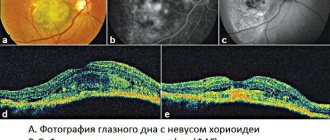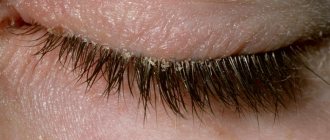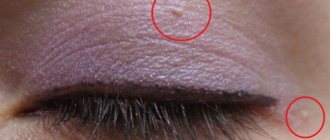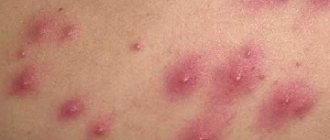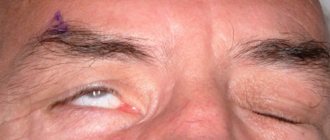| Appointment with a dermatologist at the clinic. Call a dermatologist at home. | Reception is strictly by appointment, make an appointment by phone: +7 | Prices for services | Reviews about the clinic |
Itching and redness around the eyes is an unpleasant sign, disrupting the appearance, which causes a certain amount of discomfort when visiting public places, making it possible to feel your own level of dissatisfaction with the condition of the skin.
The intensity of symptoms may be constant or appear periodically, determining seasonal allergic manifestations or the process of inflammation associated with exposure to an infectious factor. Establishing the cause of the appearance of disturbing signs on the face, affecting the eyelid area, is within the competence of the ophthalmologist, which makes it possible to determine subsequent measures for effective therapeutic recovery.
Make an appointment with a dermatologist by phone or by filling out the online form
| Select a clinic | Skin rash | Dermatologist | Dermatologist at home |
Answers to frequently asked questions about itchy skin:
- Which doctor treats itchy skin?
- What organs are affected by skin itching?
- Why is itchy skin dangerous?
- What tests should be taken for itchy skin?
- What diet is needed for itchy skin?
- What diseases does itchy skin indicate?
- Itchy skin for no apparent reason?
- What parasites cause itchy skin?
- What microorganisms cause itchy skin?
- How to get rid of itchy skin?
- Should a patient with itchy skin be isolated?
- Skin itching due to gastrointestinal diseases?
- What are the main causes of itchy skin?
- How to distinguish allergic itching from parasitic itching?
- How to prepare for an appointment with a dermatologist?
- How to get checked for skin diseases?
- What diseases does a dermatologist treat?
- What tests should be taken by a dermatologist?
- What diagnostics can a dermatologist perform in the clinic?
- Where to go with a skin disease?
Factor that causes itching and redness around the eyes
The appearance of signs of irritation on the eyelids is quite widespread, since the skin surrounding the eyeball is thinner and more delicate in structure and requires more careful care of the area, preventing the subsequent appearance of discomfort in this area.
Due to the peculiarities of its structure and accessibility to environmental factors, the skin of the eyelids instantly displays an irritation reaction to a state of internal distress, in the form of redness, tissue hydration and the development of a sensation of itching. The reasons that contribute to the development of characteristic signs most often include the following condition:
Allergy is the most common criterion for the development of symptoms, involving in the process not only the tissues of the upper, but also the lower eyelids. A peculiarity of the process is its combination with a sign of profuse lacrimation and drying of the layers of the dermis surrounding the eyeball, forming a condition of allergic dermatitis. The development of the disease is observed against the background of periodic contact with such types of allergens as plant pollen, particles of wool, medications or skin care products, chemical components of household products, etc.
The severity of itching and redness around the eyes covers a wide area, covering the site of contact with the allergen and involving adjacent tissues. Short-term exposure to an irritating factor may cause temporary symptoms and disappear on its own.
But the factor of negative influence should be taken into account and clarified, since subsequent contact with an unacceptable ingredient may cause a more violent reaction in the manifestation of symptoms. For these purposes, timely visit to an ophthalmologist
is important in the early identification of the impact factor and the implementation of measures that prevent subsequent contacts with it.
Useful information on the topic of itchy skin:
- Dermatologist
- Itching due to skin diseases
- Itchy skin without manifestations on the skin
- Itchy skin in the groin
- Itchy skin on legs
- Itchy skin on hands
- Itchy skin on the back
- Itchy skin during pregnancy
- Itchy skin in liver diseases
- Itchy skin in children
- Itchy skin in the elderly
- Treatment of itchy skin
- Night skin itching
- Causes of itchy skin
Treatment for itchy eyelids
It is worth clearly understanding that treating eye diseases is the job of an ophthalmologist. It is very difficult, and sometimes even impossible, to independently establish the exact cause of the condition. Descriptions of disease symptoms found on the Internet or medical reference books, as a rule, do not give anything. And the unreasonable use of medications contributes to the distortion of the clinical picture and the transition of the disease to a chronic course, which only aggravates the general condition.
The approach to choosing treatment for a particular eye disease should be professional. After all, the task of a therapeutic agent is to eliminate the cause of the symptom, and not its manifestations. Usually, for the treatment of infectious eye diseases, specialists prescribe antibacterial or antiviral agents. Eye ointments Zovirax (Acyclovir), Nucleavir cope well with viral agents, and eye drops Poludan, Actipol, Okoferon also help well. Bacterial eye infections are effectively eliminated with eye ointments and drops with an antibacterial effect, such as: Sulfacyl sodium, Norfloxacin, Tetracycline, Tobrex, Gentamicin, Floxal, Ciprofloxacin, Levomycetin, Oftamirin. There are effective remedies that reduce the manifestations of allergic reactions. These are antihistamines used orally: Ceterizine, Loratadine, Fexofenadine, Levocetirizine, as well as drugs used externally: eye drops Kromofarm, Cromohexal and corticosteroids Hydrocortisone, Prednisolone.
Demodicosis can be eliminated only with comprehensive treatment, which includes vitamin therapy, topical medications and agents that enhance immunity, these include Stop Demodex eyelid cream and antihistamines.
To avoid diseases that cause itching of the eyes and eyelids, it is necessary to follow very simple rules of personal hygiene and take a responsible approach to the treatment of any chronic diseases. The use of vitamin-mineral complexes for preventive purposes, plus the organization of an optimal diet throughout the year, will help reduce the risk of eye pathologies.
In the medical department, everyone can undergo examination using the most modern diagnostic equipment, and based on the results, receive advice from a highly qualified specialist. The clinic is open seven days a week and operates daily from 9 a.m. to 9 p.m. Our specialists will help identify the cause of vision loss and provide competent treatment for identified pathologies.
You can make an appointment at the Moscow Eye Clinic by calling 8 8 (499) 322-36-36 (daily from 9:00 to 21:00) or using the online registration form.
Molchanova Anna Alexandrovna
Other Possible Causes
In addition, factors contributing to the appearance of itching and redness around the eyes include tissue damage by an infectious or parasitic pathogen:
- Inflammation has a pathological basis in the form of blepharitis and is a localized expression of the course of an internal chronic process, as well as instability of immune parameters. Or acute purulent lesion of the eyelash follicle, characterizing a disease such as barley.
- Parasitic infection of the tissues of the eyelids by microscopic species of mites, which in the process of life damage the layers of the epidermis, causing severe itching and local redness of the areas.
Methods for diagnosing skin diseases:
- Diagnosis of skin diseases
- Diagnosis of skin diseases at home
- Diagnosis of allergic skin diseases
- Diagnosis of bacterial skin diseases
- Diagnosis of viral skin diseases
- Diagnosis of hair diseases
- Diagnosis of nail diseases
- Diagnosis of skin tumors
- Skin scraping
- Blisters on the skin
- Dermatoscopy
- Demodex tests
- Diagnosis of sexually transmitted infections
- Mushroom tests
- Skin scraping
Burning in the eyes: causes and methods of treatment
Everyone has experienced a burning sensation in their eyes at least once in their life. Quite often it goes away in the first minutes - for example, if it arose due to the need to chop an onion or being near a smoking object. Then there is no reason to worry about your health.
It’s a completely different matter if a burning sensation in your eyes torments you for a long time. Then it is worth identifying the cause in the near future and starting treatment - and not on your own, but under the strict guidance of an ophthalmologist.
Why does the eye burn, what can help and what is worth remembering so that discomfort never occurs? Let's tell you in more detail.
Pain and burning in the eyes: causes
Most often, those who work at a computer for a long time and do not always remember the need to get up from the table, warm up and do eye exercises complain about such sensations. However, there are other causes of burning eyes. Among them are the following:
- manifestation of an allergic reaction;
- exposure to strong wind, dust, ultraviolet rays;
- chemical irritants - from soap accidentally getting into the eye to inappropriate cosmetics. In the second case, the burning of the eyelids may also increase;
- entry of a foreign body;
- injury;
- eye diseases from conjunctivitis to cataracts;
- diseases that indirectly affect the organs of vision - for example, dermatological ones. For example, if the burning sensation is not limited to and redness appears around the eyes and the skin begins to peel off, the problem may be in its condition.
Associated symptoms
Burning of the eye mucosa does not always occur on its own - in most cases it is accompanied by other symptoms, which make it easier to understand what caused the problem.
Additional symptoms that are particularly common include:
- dryness;
- redness;
- lacrimation;
- swelling under the eye;
- peeling skin.
If there is only one symptom, perhaps the problem can be solved without leaving home, but if you count three or four, you should urgently call a specialist so that he can see you as soon as possible.
SIGN UP FOR A CONSULTATION +7 (#{XXX}) #{XXX}-#{XX}-#{XX}
How to get rid of burning eyes
The method of treating burning sensation depends entirely on the reason why the problem arose. If caustic chemicals or unsuitable cosmetics get into the eye, it is sufficient to immediately rinse it with either moisturizing drops or boiled or bottled water.
After rinsing your eyes, it's a good idea to soothe your eyes with cold compresses.
If you notice a foreign body in the eye and are confident that you can remove it yourself, proceed carefully and use only tissues or cotton swabs. Then don't forget to rinse and make sure you don't scratch your eyelid.
Prevention
To prevent burning, you just need to follow a few rules:
- do not sit at the computer without a break, take breaks and do not forget about eye exercises;
- remember that buying the first lenses you come across to improve your vision is a bad idea; you should not put a product in your eyes that may not suit you;
- carefully study the composition of all cosmetics that can get on or under your eyelids;
- Wear safety glasses when working with strong chemicals.
In addition, be sure to regularly visit an ophthalmologist - this is the only way to be sure that everything is fine with you. Take care of yourself!
Where can I get appropriate advice?
You can find out the characteristics of various medical centers in Moscow and not only choose a competent specialist to visit, but also make an appointment with an ophthalmologist at home, using the information content of our Directory for private clinics “Your Doctor”, which additionally allows you to theoretically familiarize yourself with the pathological disorders of interest.
Publication date: 2018-02-07
Diagnostics
A specialist in the field of dermatology will determine the cause of the symptom; if necessary, doctors of other specialties will be involved in the examination. The dermatologist conducts a visual examination of the areas of the skin where the patient feels a burning sensation, after which he takes material for laboratory tests. Diagnostic search includes the following research methods:
- Dermatoscopy.
Under a microscope, the doctor examines the structures of the skin and identifies the initial stages of pathological changes. This is a simple and non-invasive method, which is indicated if the patient has a burning sensation in the area of new growths or suspiciously changed areas of the skin. - Luminescent diagnostics.
Inspection of the affected area using a Wood's paw allows you to quickly confirm ringworm, pityriasis versicolor, and erythrasma. The technique is used for rapid diagnosis of pseudomonas infection and acne. - Scraping examination.
The upper layer of the epidermis from the affected area is taken for microscopic examination. This method is informative in the diagnosis of fungal and bacterial infections. If a dermatologist needs to clarify the nature of the pathological process, a histological examination of a skin biopsy is prescribed. - Blood tests
. A clinical test is performed to detect signs of inflammatory or autoimmune diseases. An increase in eosinophils in the hemogram indicates the allergic nature of the burning sensation. To assess the activity of dermatological diseases, a biochemical analysis with acute phase indicators and a proteinogram is prescribed.
During the period of remission of allergic dermatoses, prick tests are recommended to determine provoking factors and select ASIT. If there is a burning sensation in the lower extremities in elderly patients, duplex scanning of the peripheral arteries and arteriography must be performed. If complaints of burning skin are combined with inappropriate behavior of the patient, a psychiatric examination is prescribed.
Dressing for skin burns
Treatment
Help before diagnosis
If the burning sensation is caused by a slight burn of the skin (only redness, no blisters), it can be treated with dexpanthenol sprays. Medicines quickly relieve symptoms, soothe the skin and promote its healing. If you experience severe burns, rashes or other symptoms, consult a doctor. To quickly relieve burning sensations, experts prescribe gels and sprays with a soothing and cooling effect.
Conservative therapy
Therapy is determined by the underlying disease. Often, burning skin is caused by dermatological pathologies, to eliminate which an integrated approach is practiced. For mild cases of the disease, local remedies are sufficient: lotions and wet-dry dressings for weeping, ointments and rich creams for peeling. They use medications with antiseptics and antibiotics, topical steroids, and antimycotics.
For allergic dermatoses, systemic detoxification therapy is prescribed: antihistamines, sedatives, methods of extracorporeal hemocorrection. Antifungal drugs in tablets are recommended for the treatment of common mycoses. Herpes zoster requires intravenous or oral acyclovir.
Physiotherapy methods are effective in a comprehensive treatment regimen. To eliminate rashes, accelerate skin healing and stimulate immune defense, laser therapy, magnetic therapy, and ozone therapy are prescribed. In the remission phase of chronic dermatoses, skin irradiation with ultraviolet light and mud therapy are used. With senestopathies, patients require the help of a psychiatrist.
